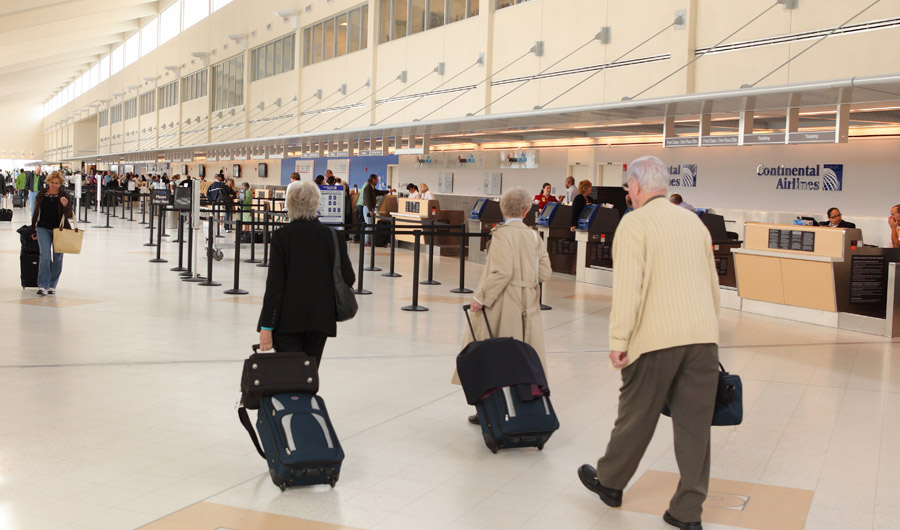Solving the Riddle of Why Rolling Luggage Wobbles

Lee County Port Authority via Wikimedia Commons
(Inside Science) -- Anyone who has ever had to rush from one airport gate to another may have experienced how much trouble a wobbly, rolling suitcase can cause, even while walking at modest speeds. Now scientists in France, experimenting with model suitcases on treadmills, reveal that the best solution for when such a suitcase comes close to overturning may not be to slow down, but to speed up. Such work exploring the physics of everyday life can shed light on the surprising behavior that can result when different kinds of motion come together, the researchers said.
Physicist Sylvain Courrech du Pont at Paris Diderot University began investigating the behavior of rolling suitcases to amuse his undergraduate students during experiments. But, the work also examined "a real scientific question" that few had studied, he said.
Specifically, a rolling suitcase couples two kinds of motion -- when the wheels of the suitcase rotate, the bulk of the suitcase "translates," or moves in the same direction without rotating. The unstable way in which a rolling suitcase can behave represents an intersection of rotational and translational motion.
In experiments, the researchers tested a two-wheeled aluminum model suitcase on a treadmill rolling 1 to 16 kilometers per hour. They analyzed how the motion of the model depended on how weight was distributed on this suitcase and on the speed at which it was pulled. White LED lights on the model helped them keep track of the suitcase's motion.
The scientists found that when one wheel of the model suitcase got lifted off the floor -- mimicking what would happen if a real suitcase hit a bump or a pit -- the model began rocking side to side, much as a rivulet of water would get diverted sideways after encountering an impediment. With such behavior, where each wheel took turns rebounding off the ground, the suitcase acted like a pendulum.
The rocking intensified not just the more a wheel got lifted off the floor, but also the faster the suitcase was pulled. If the rocking was great enough, the model could overturn.
However, the scientists found that the best way to diminish this rocking was not to slow down the speed at which the suitcase moved, but to pull it faster. This is because rolling suitcases couple rotational and translational motion together, Courrech du Pont said. As a result, the faster the suitcase was pulled -- that is, translated -- the more energy it took for the suitcase to rock back and forth and possibly topple over.
"It is a very extensive study, covering experiments and theory, on a problem experienced daily by anyone who carried a luggage," said physicist François Petrelis at the École Normale Supérieure in Paris, who did not take part in this research. "It shows that many problems, even of daily interest, are still waiting for a solution. Young students sometimes have the feeling that most progress was made a long time ago. This may be true in some domains of physics, but in most domains there are many problems that are still unsolved."
These findings could help researchers simulate and design better rolling suitcases and other pulled trolleys, such as towed trailers, Courrech du Pont said. He added that they could also help scientists better understand the motion of speed skaters. Although rolling suitcases and ice skaters might seem very different, Courrech du Pont noted the rocking motions they make influence their movement forward.
Courrech du Pont and his colleagues detailed their findings online June 21 in the journal Proceedings of the Royal Society A.

